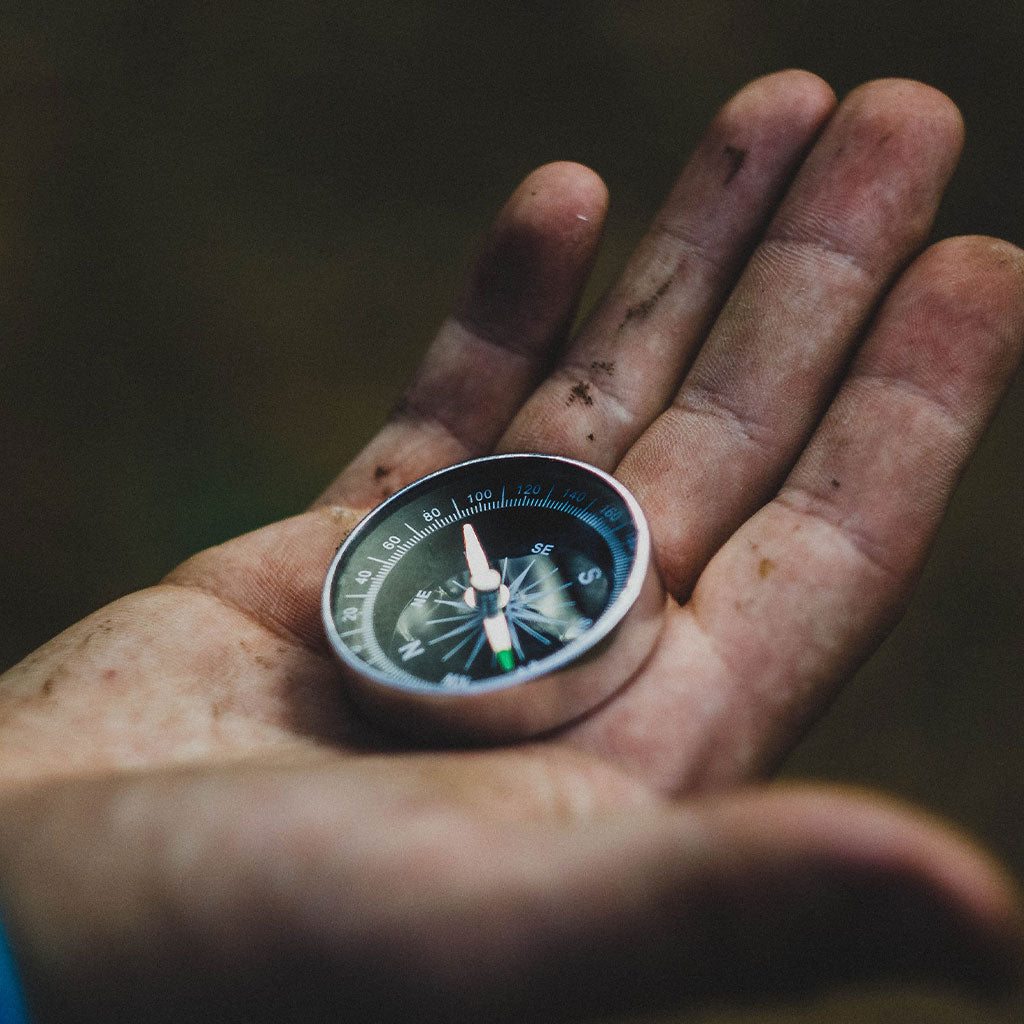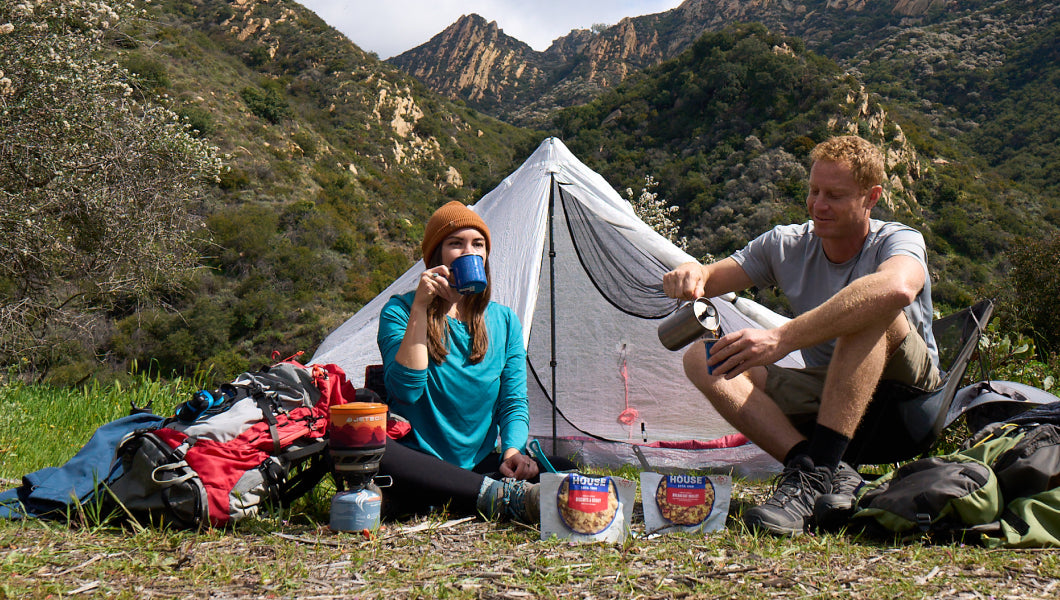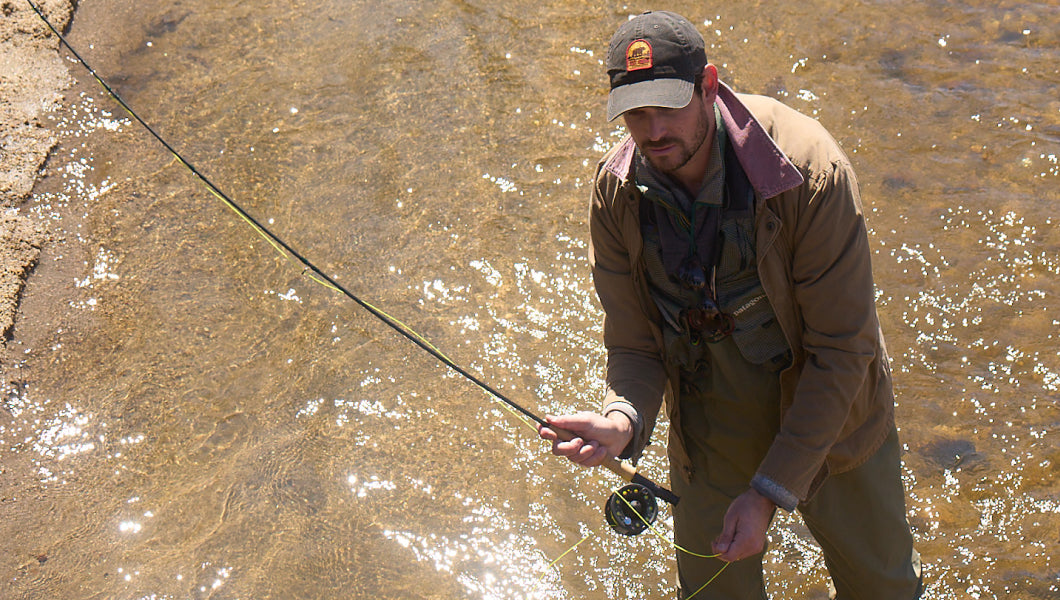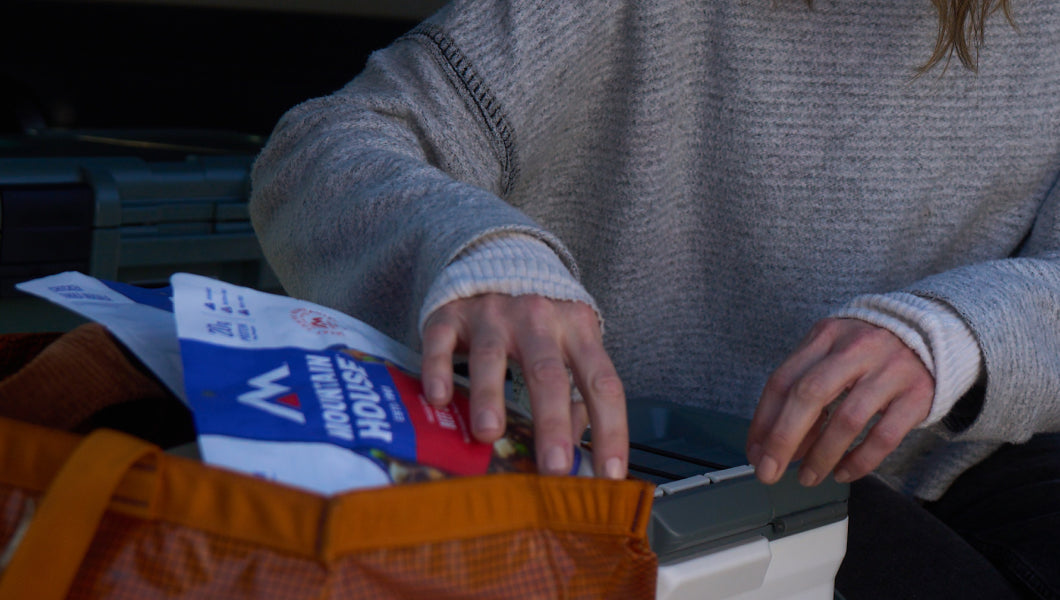Inspired for an Adventure? Check out Beef Stroganoff - Pouch and Beef Stew - Pouch
Free Ground Shipping On All Orders
Over 2,100 Reviews
Add description, images, menus and links to your mega menu
A column with no settings can be used as a spacer
Link to your collections, sales and even external links
Add up to five columns
Add description, images, menus and links to your mega menu
A column with no settings can be used as a spacer
Link to your collections, sales and even external links
Add up to five columns

What to Do If You're Lost in the Backcountry
There aren’t many sinking feelings quite like the gradual realization that you’re lost in the wilderness. Actually, you don’t need big backcountry to get turned around—not by a long shot. People get lost within a few hundred yards of roads, visitor centers, campgrounds: It happens all the time.
It’s not a pleasant sensation for most people, disorientation, and the all-too-common response is to start panicking. Needless to say, panic—natural as it is—isn’t a super-useful state when you don’t know where you are. Clear Headedness and calm will serve you much better, and to cultivate that kind of cool when you’re staring at a bewildering radius of trees or canyonland requires some prep work.
Well, consider reading this article as part of that prep work! Here we’ve put together a field guide to getting lost - which includes doing your best to avoid the situation in the first place.
Before Your Trip
Get in the habit of sharing your camping, hiking, climbing, paddling, etc. plans with folks back home, in as much detail as you can provide. There’s no insurance policy like having somebody back in civilization who knows when you’re supposed to return, and knows roughly where you are in case you don’t in order to inform search-and-rescue authorities.
It can seem like overkill, but relay your plans even if it’s just a day-hike in some popular recreation site. Just as you can get lost in small patches of front-country as well as huge tracts of wilderness, you can also get lost on what was supposed to be nothing more than an hour-long nature walk, not even any sort of major multi-day backpacking or hunting adventure.
Staying Oriented
Among the linchpins of the Ten Essentials is proper navigation equipment. As we’ve emphasized before on the Mountain House blog, that includes a properly scaled topographic map and a good working compass in addition to whatever GPS or mapping app you favor.
If you spend any time in the great outdoors, you should know your way around a map and compass, which means practicing at home and in the field. If you prefer using a GPS unit, by all means use it, but have those old-school tools as backup. They’re useful on their own and of course in tandem; if you get lost, the compass in particular can help make sure you don’t get more lost.
Rather than burn your way through the miles without really paying attention to where you are, assess your surroundings and your position on the map at regular intervals. If you’re going cross-country or following a lightly maintained, somewhat obscure trail, make note of important waypoints such as trail junctions, cairns, distinctive trees or rock formations, and the like. This can help you trace your way back along the same route, and will anchor your progress with landmarks that, if you get lost, can help you narrow down when and where you lost the way.
Also: Check the time frequently and keep track of how long you’ve been out and about, and how long it’s been since you passed this or that known reference point.
Discovering You’re Lost
Pride’s definitely an enemy out there in the backwoods. Many people have trouble admitting they’re lost, whether to others in their party or themselves; it’s all too easy to ignore the nagging suspicion you’re “off the map” and try to bluff your way back on it. That’s a bad idea: More likely than not, this is an efficient way to get way more off the map.
In other words, admitting you don’t know where you are is a critical first step to getting found. In many cases, you’ll quickly reorient yourself if you take the time to stop (aka S.T.O.P. - see below) and analyze the situation rather than blindly forge on, too prideful to accept the reality of it.
S.T.O.P.
This is a handy acronym for recalling the most sensible course of action in case you do find yourself lost.
- “S” stands for “Sit”: stop hiking, sit on the nearest log or rock, and break out the chocolate bar. Again, this is about halting progress that might lead you farther astray; it’s also a good way to calm your nerves.
- “T” stands for “think,” which means trying to remember the last time and place you knew where you were, and studying the map to try to identify your current position.
- “O” is for “observe”: Take a compass reading, study your surroundings, try to figure out where the nearest water source is, eyeball the sky to ascertain any potential weather hazards in the offing.
- Finally, “P” stands for “plan.” Once you’ve assessed your situation, reviewed your immediate environment, and scrutinized the map, you can come up with a gameplan. That may mean carefully backtracking if you’re pretty sure you know how to return to a spot you’ve previously passed (and then assessing again to make sure you’ve located yourself, or if need be doing the “S.T.O.P. routine again, there). Perhaps you predict that rainclouds or sundown will hit before you’re able to get to a known position, in which case you should go about finding or preparing shelter.
Keep in mind that, more often than not, it’s better to stay put if you’re not seriously confident you can navigate your way back to a known landmark. Most people who get lost are found within a day or two—if somebody knows they haven’t returned or checked in, that is, and if they hold to one spot that rescuers can zero in on.
If you do want to try to reach a known position, or if your immediate surroundings are for whatever reason too dangerous to remain in, track your progress meticulously. Define the spot where you became lost as its own landmark: mark it somehow (maybe with a waypoint and a physical sign), take a picture if you can, and then note the direction and distance of your forays from it. If you think you may be near a road, trail, river, or some other linear feature you can identify on the map, you might consider making straight-line scouting walks from the site where you realized you were lost: Use your compass and count your steps so that, if need be, you can backtrack exactly. With this kind of careful compass scouting, you can survey other directions at greater distances, because you’ll always be able to get back to the “S.T.O.P." landmark—in other words, you’ll safeguard yourself against becoming more deeply lost.
Backcountry Survival Know-How & Wherewithal
There’s a good chance you’ll locate yourself or quickly be located if you’re lost, but in case you end up spending a few nights out in the boonies having the emergency supplies and backcountry survival skills to do so comfortably will give you much greater peace-of-mind on any outdoor adventure. Again, if you’ve shared your route information and followed “S.T.O.P.” protocol, it’s pretty unlikely you’re going to be going weeks and weeks in full Daniel Boone mode: Initially, you simply need a warm, dry, safe shelter and the extra food (Mountain House, anyone?) and water (or water-procuring equipment) that you should have on hand as part of the Ten Essentials.
Learn more about what to do when you get lost in the backwoods with this Backpacker article and this primer from the New York State Department of Environmental Conservation. And for some illuminating context on how backcountry search-and-rescue works, check out this Outside piece.

Best Places to Go Winter Wildlife Watching in North America

Exploring the Best Winter Desert Hiking in the Southwest United States


Stay Hungry for Adventure
Sign Up for Delicious Outdoor Meals & Exclusive Offers!


Join the adventure
©2024 Mountain House — All Rights Reserved.
Your Cart is Empty
Continue ShoppingYour Cart
Subtotal
$0.00
EXPRESS PAYMENT METHODS AVAILABLE IN CHECKOUT
Taxes and Shipping Calculated at Checkout














